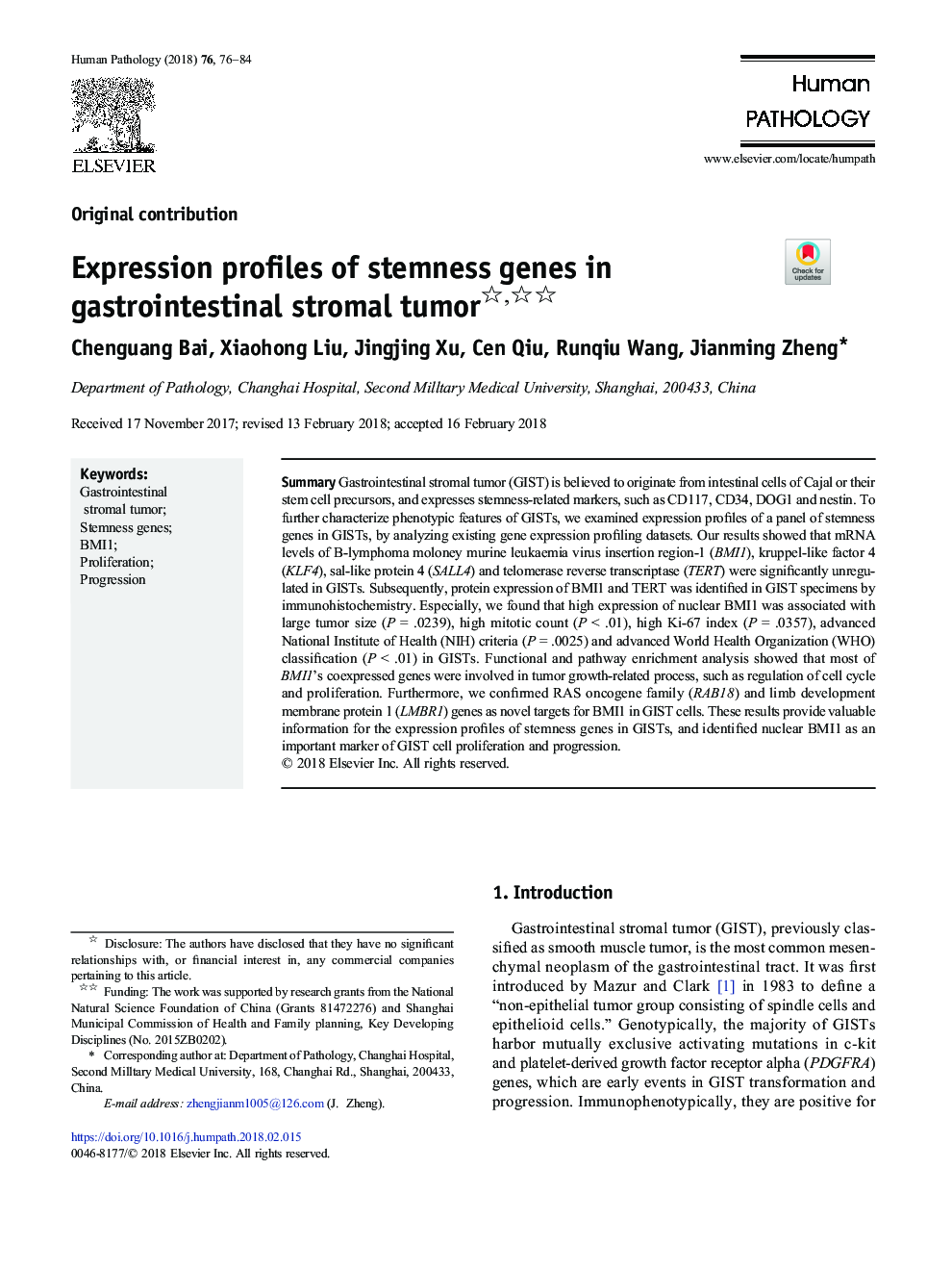| Article ID | Journal | Published Year | Pages | File Type |
|---|---|---|---|---|
| 8807528 | Human Pathology | 2018 | 9 Pages |
Abstract
Gastrointestinal stromal tumor (GIST) is believed to originate from intestinal cells of Cajal or their stem cell precursors, and expresses stemness-related markers, such as CD117, CD34, DOG1 and nestin. To further characterize phenotypic features of GISTs, we examined expression profiles of a panel of stemness genes in GISTs, by analyzing existing gene expression profiling datasets. Our results showed that mRNA levels of B-lymphoma moloney murine leukaemia virus insertion region-1 (BMI1), kruppel-like factor 4 (KLF4), sal-like protein 4 (SALL4) and telomerase reverse transcriptase (TERT) were significantly unregulated in GISTs. Subsequently, protein expression of BMI1 and TERT was identified in GIST specimens by immunohistochemistry. Especially, we found that high expression of nuclear BMI1 was associated with large tumor size (P = .0239), high mitotic count (P < .01), high Ki-67 index (P = .0357), advanced National Institute of Health (NIH) criteria (P = .0025) and advanced World Health Organization (WHO) classification (P < .01) in GISTs. Functional and pathway enrichment analysis showed that most of BMI1's coexpressed genes were involved in tumor growth-related process, such as regulation of cell cycle and proliferation. Furthermore, we confirmed RAS oncogene family (RAB18) and limb development membrane protein 1 (LMBR1) genes as novel targets for BMI1 in GIST cells. These results provide valuable information for the expression profiles of stemness genes in GISTs, and identified nuclear BMI1 as an important marker of GIST cell proliferation and progression.
Related Topics
Health Sciences
Medicine and Dentistry
Pathology and Medical Technology
Authors
Chenguang Bai, Xiaohong Liu, Jingjing Xu, Cen Qiu, Runqiu Wang, Jianming Zheng,
